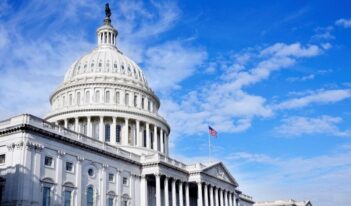
Scholar argues that financial regulators must be decisive yet agile when using imperfect information.
Since President Donald Trump entered office, the U.S. economy has by many measures continued the upward trajectory started under former President Barack Obama. Most notably, the economy grew 2.3 percent during the first year of the Trump Administration and unemployment has dropped to 3.8 percent, the lowest in 18 years.
But what happens when the good times end? Yale Law School professor Roberta Romano argues that, when the next financial crisis and economic downturn hits, the nation will need new procedural requirements to ensure the most decisive yet flexible regulatory response.
Whether enacted through legislation or administrative rulemaking, federal regulation normally involves a slow, deliberative process. But when faced with rapidly deteriorating economic conditions and imperfect information—along with jobs, personal wealth, and the health of the economic system on the line—policymakers must respond quickly, opening the door for potentially poor decision-making.
“By tending to enact comprehensive financial legislation only in reaction to an immediate financial crisis,” Romano writes, “Congress acts most swiftly precisely when greater deliberateness is called for, given the paucity of information available to produce a high-quality decision.” To make matters worse, Romano notes, Congress often fails to revise financial regulations once the flaws begin to emerge.
The stakes are high, Romano says. The complexity of economic systems and the central role financial institutions play in them make the margin of error during periods of financial tumult exceptionally narrow.
In response, Romano proposes two mandatory procedural mechanisms to reduce the pitfalls of crisis-time financial legislation and regulation.
First, statutes passed in response to financial crises and the regulations issued to implement the legislation should have sunset provisions that set an expiration date and require automatic lookback review of the regulatory actions. Sunsetting would help to address flaws in financial regulations because it “loosens the institutional stickiness of the status quo,” Romano writes.
In practice, Congress would indicate criteria in the original legislation to guide evaluation five to six years down the road, at the expiration date of the law. Upon expiration of the statute, Congress and the President would appoint a review panel of independent experts to assess the effectiveness of the regulations against the criteria. The panel would then recommend whether to repeal, replace, or re-new the legislation, with a requirement under the statute that Congress vote on the recommendation.
Sunsetting creates an avenue for incorporating new, post-implementation information into a regulatory scheme that might have been set up in a hurry. Providing the opportunity for a second look could also allow regulators to account for new technological innovations and shifts which might render some rules unnecessary or call for new rules. Imperfect information at the time of the regulatory action does not excuse government failure to revise its actions with the benefit of hindsight.
Romano’s second proposal calls for financial legislation and regulation to embrace experimentation as a means of improving financial rules. Such flexibility would take the form of granting certain firms waivers from regulatory requirements and closely studying their performance. This approach would be analogous to the experimental regulatory scheme adopted by the U.S. Food and Drug Administration, which randomly samples and tests new drugs before approval.
Congress has taken such an experimentation-oriented approach to financial regulation before, but only in narrow contexts, Romano says. For instance, Sarbanes-Oxley—a major piece of financial legislation targeting fraudulent corporate accounting activities—requires that firms be audited by an independent committee before being listed on a stock exchange. The statute, however, allows the U.S. Securities and Exchange Commission—the agency charged with regulating financial services—to modify the criteria for independent review and make exceptions for certain firms.
Romano proposes allowing firms to make their case for waivers by proving that the exemption would not significantly interfere with the regulatory scheme’s central objectives—for instance, reducing fraud or risky behavior. She envisions closely monitoring exempt and non-exempt firms, conducting benefit-cost analyses on their performance and adherence to regulatory goals, and tweaking the scope of exemptions accordingly for the future. Such a scheme would cultivate a spirit of experimentation and ideally refine the initial set of rules.
The experiments would not be perfect, Romano admits. Because the firms most burdened by a regulation in the first place would likely self-select to request an exemption, comparing the performance of exempt and non-exempt firms could yield skewed results. Still, Romano would trust the first element of her scheme—thorough lookback review—to reduce the effect of this self-selection issue.
Ultimately, Congress and federal regulators will someday face another financial crisis. Although legislators and administrators need to act quickly under these conditions, they can reduce the risk of error by implementing backward looking procedural safeguards to ensure that regulators learn from their mistakes, Romano argues.
Romano’s article is a consolidated version of a chapter published in Regulatory Breakdown: The Crisis of Confidence in U.S. Regulation, a 2012 book edited by Cary Coglianese and published by the University of Pennsylvania Press.



